HIV latency in isolated patient CD4+ T cells may be due to blocks in HIV transcriptional elongation, completion, and splicing
- PMID: 29491188
- PMCID: PMC5959841
- DOI: 10.1126/scitranslmed.aap9927
HIV latency in isolated patient CD4+ T cells may be due to blocks in HIV transcriptional elongation, completion, and splicing
Abstract
Latently infected CD4+ T cells are the main barrier to complete clearance of HIV infection, but it is unclear what mechanisms govern latent HIV infection in vivo. To address this question, we developed a new panel of reverse transcription droplet digital polymerase chain reaction (RT-ddPCR) assays specific for different HIV transcripts that define distinct blocks to transcription. We applied this panel of assays to CD4+ T cells freshly isolated from HIV-infected patients on suppressive antiretroviral therapy (ART) to quantify the degree to which different mechanisms inhibit HIV transcription. In addition, we measured the degree to which these transcriptional blocks could be reversed ex vivo by T cell activation (using anti-CD3/CD28 antibodies) or latency-reversing agents. We found that the main reversible block to HIV RNA transcription was not inhibition of transcriptional initiation but rather a series of blocks to proximal elongation, distal transcription/polyadenylation (completion), and multiple splicing. Cell dilution experiments suggested that these mechanisms operated in most of the HIV-infected CD4+ T cells examined. Latency-reversing agents exerted differential effects on the three blocks to HIV transcription, suggesting that these blocks may be governed by different mechanisms.
Copyright © 2018 The Authors, some rights reserved; exclusive licensee American Association for the Advancement of Science. No claim to original U.S. Government Works.
Conflict of interest statement
Figures
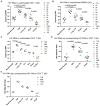
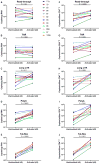
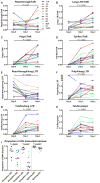
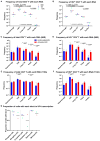
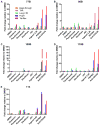
References
-
- Chun TW, Finzi D, Margolick J, Chadwick K, Schwartz D, Siliciano RF. In vivo fate of HIV-1-infected T cells: Quantitative analysis of the transition to stable latency. Nat Med. 1995;1:1284–1290. - PubMed
-
- Chun TW, Carruth L, Finzi D, Shen X, DiGiuseppe JA, Taylor H, Hermankova M, Chadwick K, Margolick J, Quinn TC, Kuo YH, Brookmeyer R, Zeiger MA, Barditch-Crovo P, Siliciano RF. Quantification of latent tissue reservoirs and total body viral load in HIV-1 infection. Nature. 1997;387:183–188. - PubMed
-
- Wong JK, Hezareh M, Günthard HF, Havlir DV, Ignacio CC, Spina CA, Richman DD. Recovery of replication-competent HIV despite prolonged suppression of plasma viremia. Science. 1997;278:1291–1295. - PubMed
-
- Finzi D, Hermankova M, Pierson T, Carruth LM, Buck C, Chaisson RE, Quinn TC, Chadwick K, Margolick J, Brookmeyer R, Gallant J, Markowitz M, Ho DD, Richman DD, Siliciano RF. Identification of a reservoir for HIV-1 in patients on highly active antiretroviral therapy. Science. 1997;278:1295–1300. - PubMed
-
- Finzi D, Blankson J, Siliciano JD, Margolick JB, Chadwick K, Pierson T, Smith K, Lisziewicz J, Lori F, Flexner C, Quinn TC, Chaisson RE, Rosenberg E, Walker B, Gange S, Gallant J, Siliciano RF. Latent infection of CD4+ T cells provides a mechanism for lifelong persistence of HIV-1, even in patients on effective combination therapy. Nat Med. 1999;5:512–517. - PubMed
Publication types
MeSH terms
Substances
Grants and funding
LinkOut - more resources
Full Text Sources
Other Literature Sources
Research Materials

